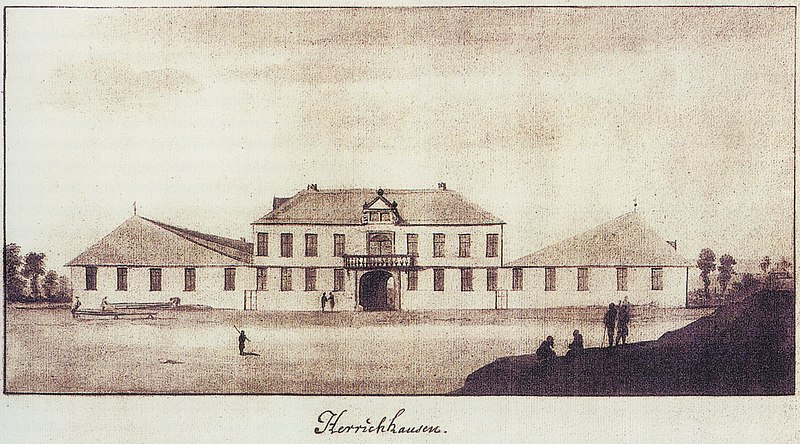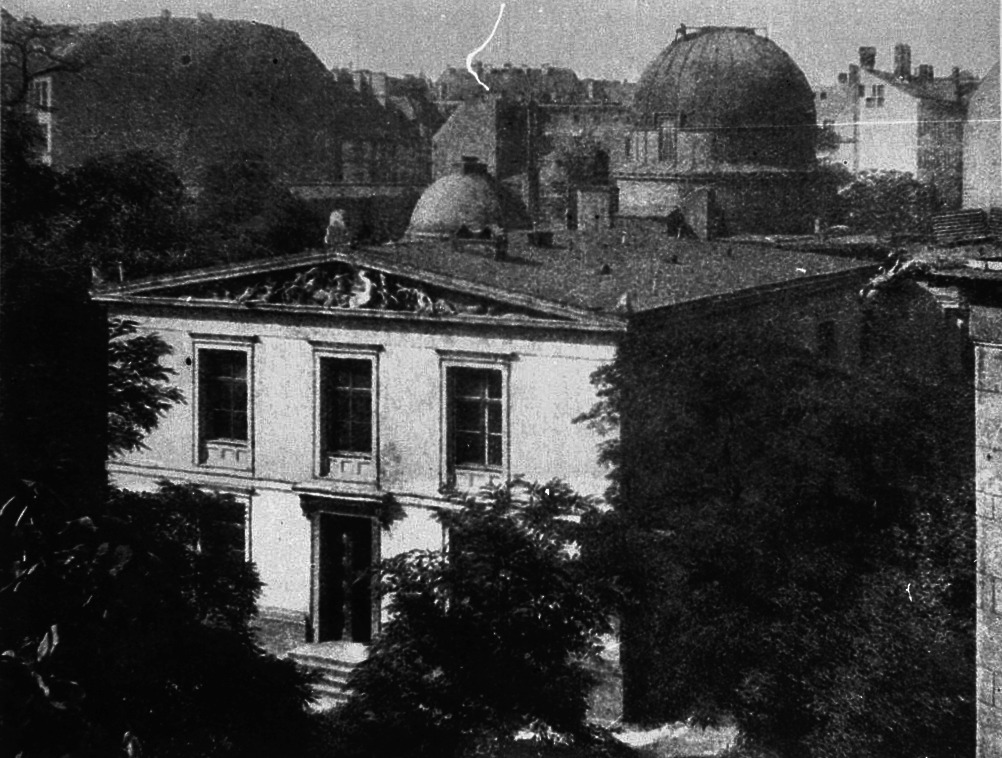In 1835, architect Kar Friedrich Schinkel was tasked with designing a new building for the library of the Friedrich-Wilhelm-Universität in Berlin. His vision of the Universitätsbibliothek consisted of a three-storey structure, roughly of the same height as the Prinz-Heinrich-Palais (the university main building), to be located in the university garden, on the corner of Dorotheenstraße and Universitätstraße, with entrances both on Universitätstraße and within the university garden.
Like the contemporary Bauakademie, the University Library moved away from classicism and other past architectural styles, with the façade featuring no capitals, freezes nor entablature. IInstead, it consisted of nineteen and eleven arches on its longer and shorter sides respectively, and simple towers on each corner. Holes above the arches were part of the drainage system of the roof, which was hidden behind the high walls.Internally, Schinkel conceived the library as a continuous hallway, centered around the central courtyard. and bookcases were to ne placed in between the windows. Access to the upper floors was to be provided by a large spiral staircase in the centre of the courtyard, which would divide the latter in two.
King Friedrich Wilhelm IV found the design too simplistic, so Scinkel went on to make slight changes. Rather than presenting a new design altogether, he modified the existing one by adding ornamentation (most notably, two rows of statues above the entrances) and changing the shape from a rectangle to a square with fifteen arches per side, Except for the inclusion of a basement, the internal distribution would remain the same as that of the preceeding design. This second incarnation of the library was to be located directly behind the Prinz-Heinrich-Palais, and alligned with its central axis.
Unfortunately, neither of these designs was built, and the Universitätsbibliothek remained housed in the Old Library (popularly known as the Kommode) at Opernplatz until the construction of Spieker's building in 1874.
Schinkel's drawings were preserved and can be seen here.






















